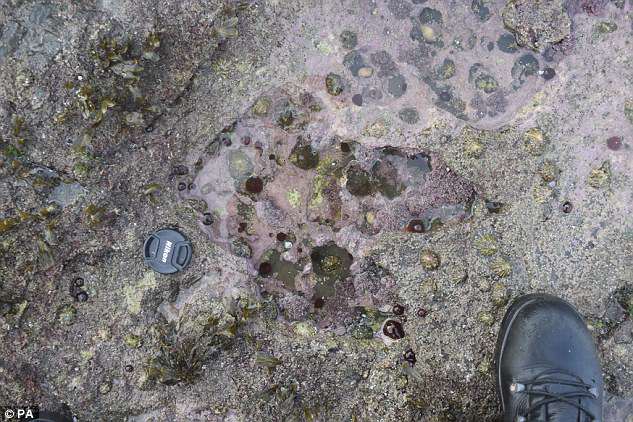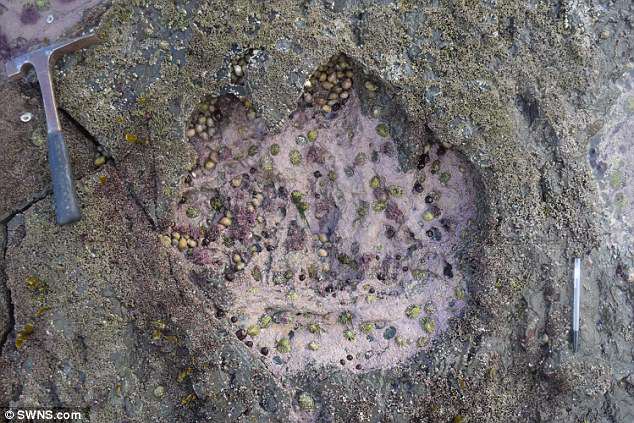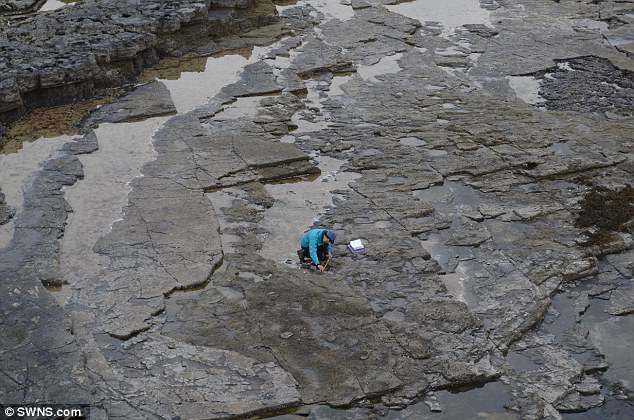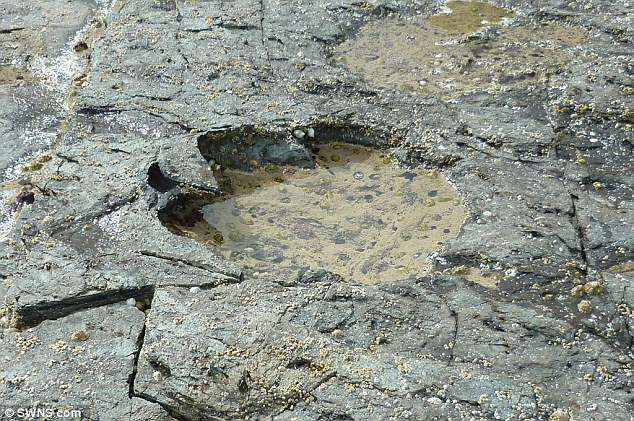It is enough to delight any dinosaur enthusiast – and has been found right here in Britain.
Scientists have discovered close to 50 footprints on the Isle of Skye left behind by the world’s largest dinosaurs.
The sharp-clawed, three-toed prints of meat-eating theropods and tracks of the long-necked sauropods were made in a muddy lagoon 170 million years ago but have only recently been spotted in the shale rocks of Skye.
Sauropods grew to be as long as 50ft (15 metres) long and weighed more than 10 tonnes.
They come from a time called the Middle Jurassic, about which very little is known. But the prints suggest British dinosaurs, which first appeared 230 million years ago, appear to have been rather civilised and lived peacefully together.
It is the second discovery of dinosaur footprints on Skye, which are difficult to study because of weathering and tidal conditions.
Dr Steve Brusatte, from the University of Edinburgh, who led a study into the footprints, said: ‘The more we look on the Isle of Skye, the more dinosaur footprints we find.
‘This new site records two different types of dinosaurs – long-necked cousins of Brontosaurus and sharp-toothed cousins of T. rex – hanging around a shallow lagoon, back when Scotland was much warmer and dinosaurs were beginning their march to global dominance.’
The dinosaurs lived on a larger island containing Skye when the super-continents were starting to break apart, the Atlantic was a narrow stretch of water and Britain was closer to the equator, with a climate more like Florida.


At that time birds were taking to the skies for the first time, the T. rex had first appeared and dinosaurs were beginning to become colossal in size.
Most of the prints on Skye were made by the ‘older cousins’ of Tyrannosaurus rex, called theropods, which walked on two legs and stood more than 6.5 feet (2m) tall.
But the largest of the tracks are almost 28 inches (70cm) across and were left by a sauropod.
Researchers measured, photographed and analysed the prints in a tidal area at Brothers’ Point – Rubha nam Brathairean – a dramatic headland on Skye’s Trotternish peninsula.

Analysis of the clearest prints – including the overall shape of the track outline, the shape and orientation of the toes, and the presence of claws – enabled scientists to determine they belonged to sauropods and theropods.
Paige dePolo, who led the study as a student in the University of Edinburgh’s research Master’s degree programme in palaeontology and geobiology, said: ‘It was found in rocks that were slightly older than those previously found at Duntulm on the island and demonstrates the presence of sauropods in this part of the world through a longer timescale than previously known.
‘This site is a useful building block for us to continue fleshing out a picture of what dinosaurs were like on Skye in the Middle Jurassic.’













